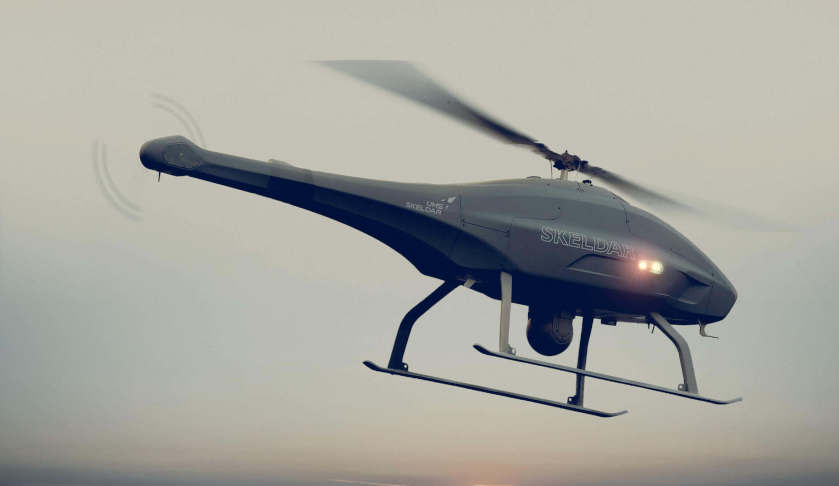UMS Skeldar has used the Farnborough International Airshow in the UK to officially unveil the new variant of their Skeldar V-200 unmanned aerial system, which is in the running for Australia’s SEA 129 Phase 5 Stage 1 Maritime Tactical Unmanned Aircraft System (MTUAS) program.
To continue reading the rest of this article, please log in.
Create free account to get unlimited news articles and more!
The SKELDAR V-200B completed its trials earlier this year, following an intensive modification audit, based on in-theatre performance feedback and the strategic imperative to further widen competitive advantage.
“It is no secret that more players are attempting to enter the maritime market for rotary UAVs. Recent navy contracts have stipulated the role and specification, and this has confirmed our strategy of development is absolutely the right move at the right time,” said David Willems, head of business development at UMS Skeldar, the UAV joint venture between Sweden’s Saab and UMS AERO of Switzerland.
“We are able to fly longer, over five hours, at maximum payload capacity through weight savings from design modifications and our 2-stroke engine configuration provides significantly unmatched time between overhauls (TBO), all of which are vital to maritime operations by military and civilian customers.”
The SKELDAR V-200B variant of the industry-pioneering heavy-fuel engine rotary UAV, boasting enhanced features including extended endurance, engine management system and payload capabilities.
The past 12 months have witnessed substantial corporate strategic initiatives for UMS Skeldar, thanks to a new senior management team, led by ex-Saab industrial business head Axel Cavalli-Bjorkman. Achievements include:
- The alignment of production and supply chain at Linköping in Sweden;
- The acquisition of German engine manufacturer Hirth;
- Heavyweight partnership programs aimed at navy contracts including the recent collaboration with QinetiQ to provide the platforms and solutions for a joint Canadian maritime program, including the Royal Canadian Navy UAV contract, ESG in Germany, a number of undisclosed navy tenders and the declared mission to win the RAN SEA 129 Phase 5 Stage 1 MTUAS tender.
The Hirth-developed engine, with heavy fuel licensed technology from Australia’s Orbital Corporation, was the first medium maritime UAV to be heavy fuel capable, able to operate on Jet A-1, JP-5 and JP-8 fuels.
“The major difference between the SKELDAR V-200 engine and those of our competitors is that our engine is more tolerant of the JP-5 quality and that is a big advantage. Our maintenance schedules and ease of access to engine compartments mean that we outperform and stay longer in the air before any need for overhaul. These are non-negotiable advantages for operational commanders,” explained Willems.
Stephen Kuper
Steve has an extensive career across government, defence industry and advocacy, having previously worked for cabinet ministers at both Federal and State levels.

 Login
Login







